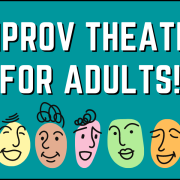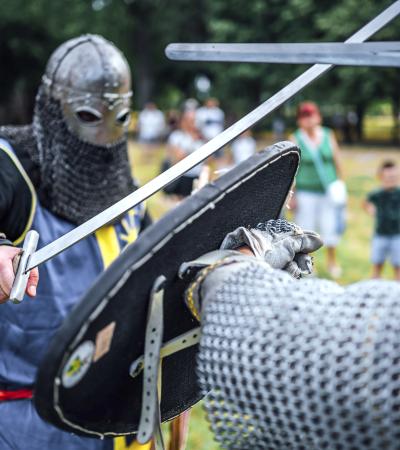A three-session series where participants can learn about improv theater and engage in improv games and exercises. This program can be tailored for either teens or adults.
Advanced Planning
Improv theater is a form of performance where actors create scenes, dialogue, and characters spontaneously without a script. It doesn’t require an audience and can be enjoyed purely for the participants’ fun and creativity.
This three-week series aimed to have fun, build community, and give participants the experience of creating theater as a group. I aimed to create an open environment where participants could think on their feet and embrace being silly.
I started preparing for the event about two months in advance, managing both the planning and execution on my own. This included researching improv games and reviewing sample class outlines and themes.
One of the biggest challenges was finding the right balance of games while remaining flexible, adjusting the order based on how each session unfolded.
Marketing
I’ve run this series three times for teens and twice for adults. To promote each event, I used a combination of newsletters, social media, paper flyers, and the local school’s community events outlet. The programs were drop-in, with no registration required, and participants didn’t need to attend all three sessions. I also emphasized in the advertising that no prior experience was necessary.
Budgeting
The budget was $0. The most important thing needed is a big enough room for people to spread out since some improv games require space.
Day-of-event Activity
At our library, we used a large community room for the event. I cleared most of the space and set up a row of chairs facing the designated "stage" area where the majority of the improv games took place. I was the only staff member in charge of running the event.
Program Execution
Each session lasted one hour. As participants arrived, I had them fill out name tags. We started by going around the room, introducing ourselves, and sharing whether anyone had previous experience with improv or acting. I made sure to emphasize that no prior experience was necessary.
After introductions, I gave a brief overview of improv theater. I explained that while improv is often comedic, the goal isn’t necessarily to be funny —though that can happen naturally. I also stressed that there’s no "right" way to do improv, but it’s important to remain respectful of others.
We began with two or three warm-up games, an easy and fun way to get everyone loosened up. There are many great improv warm-ups, and they can take about 10-20 minutes. After that, I structured the class around a specific theme, such as listening and responding, physicality, or storytelling. For the first session of the series, I avoided complex scene-based games, which can feel intimidating for beginners. Instead, I focused on simple games that often involved the whole group.
For the second and third sessions, I introduced more complex and scene-based games as participants became more comfortable.
At the end of each session, I checked in with participants to see how they were feeling and asked which activities they enjoyed most. Often, they had favorite games, and I would make a note to include those in the next session.
Advice
Improv theater is a fun, low-cost way to build community and engage people of all ages, from elementary school kids to adults. It works particularly well as a series of sessions, rather than a one-off event. Even if you’ve never done improv before, I encourage library staff to try it as part of a library program.
Depending on your location, you might be able to hire an improv instructor. However, if that’s not an option, library staff can confidently host this event by researching different games and watching examples of improv games online. Many improv games have simple rules that can be learned quickly.
When planning, it’s important to have games that can work for different group sizes. Prepare some games that involve the entire group, as well as ones that can be scaled for smaller or larger groups.
Before each game, clearly explain the rules and objectives, and make sure to ask if anyone has any questions. For those new to improv, it can be a bit intimidating! Let participants know that it’s perfectly fine to sit out of an activity if they don’t feel comfortable joining in.
I recommend creating an outline for each session but be flexible. Always include more games than you can complete in an hour so you can adjust to the size and mood of the group.
As the instructor, it’s helpful to participate in the games, especially in the beginning, to demonstrate how they work.
Most importantly, have fun! Improv is meant to be silly, and that’s part of the charm. If the participants are enjoying themselves, you’ve succeeded. As one adult participant said, "It’s hard to find opportunities like this to just be expressive and really silly."




